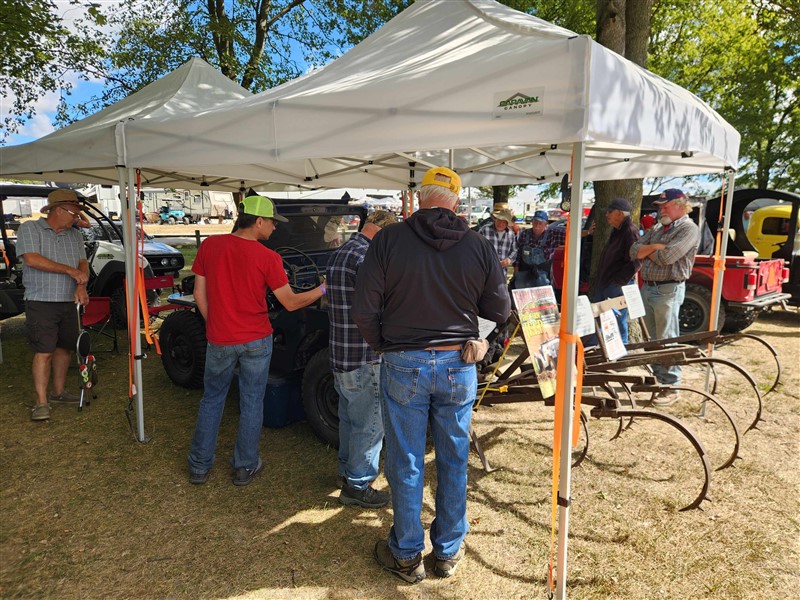
The show season has come to an end. It has been a busy year, with bad weather and vacation conflicts, causing us to miss some of our favorite events. But this year’s Elnora show was something special. Read all about it here.

The show season has come to an end. It has been a busy year, with bad weather and vacation conflicts, causing us to miss some of our favorite events. But this year’s Elnora show was something special. Read all about it here.
September is always a time of change. Summer is still hanging on and there are a couple of season-ending shows to attend. It has been a tough summer, Somethings just didn’t work out as planned and we were pushing ourselves and others to go faster to make up ground. Things got done, but it wasn’t fun. And fun is what the Farm Jeep experience is suppose to be about. So we are shifting gears.
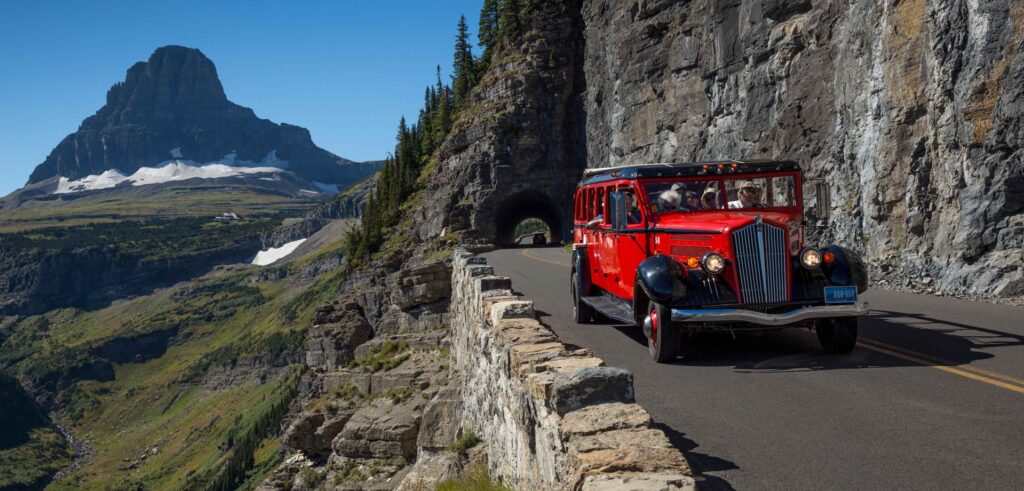
Sometimes you need an external signal or a nudge to let you know that a change is in order. Pictured above is one of the tour buses in operation at Glacier National Park. While visiting Glacier this summer, Barry became fascinated with the Red Buses. The history of these machines will make you smile. This was pure fun. Drivers were known as “Jammers” because they could be heard “jamming” gears as they tried to shift the transmission. But along the way, changes were made that improved the performance of the buses and made shifting gears and driving easier. It got him thinking,,,
We seem to have been jamming gears this summer. So we are stepping back and seeing how we can get back to having fun. The Jeep Spotters and Lift Registry projects have gone nowhere. We will work on those. We also will going to halt some research projects. We are learning to accept that somethings will never be known. While we won’t close them, we are going to report are findings and move on. To something fun.
In the next few months, we are going to explore how Willys – and Monroe, for a they were a big part of it – went about selling the Farm Jeep. A key factor was the farm demonstration. It was so important that Robert Green of Newgren fame wrote a book about how to conduct a demonstration. Monroe would make the farm demonstration a key feature of their 1949 marketing campaign “Revolution in Farming.”
Willys would devote an entire section of its “Product Merchandising Manual” to “Demonstrations.” It even includes instructions on how to shift gears. You can check it out “Techniques of Shifting.” Just scroll down to page 11 of the manual.
Stay tuned!
For the first time, my latest article for Farm Collector will be a web-only publication. You can read it at – https://www.farmcollector.com/tractors/jabez-love-innovations-zw0z2408zbro/
The article is a summation of the extensive research we have conducted on Love. You can read the entire story at https://www.farmjeep.com/lifts/love-lift/love-lift-history/jabez-love/
Barry
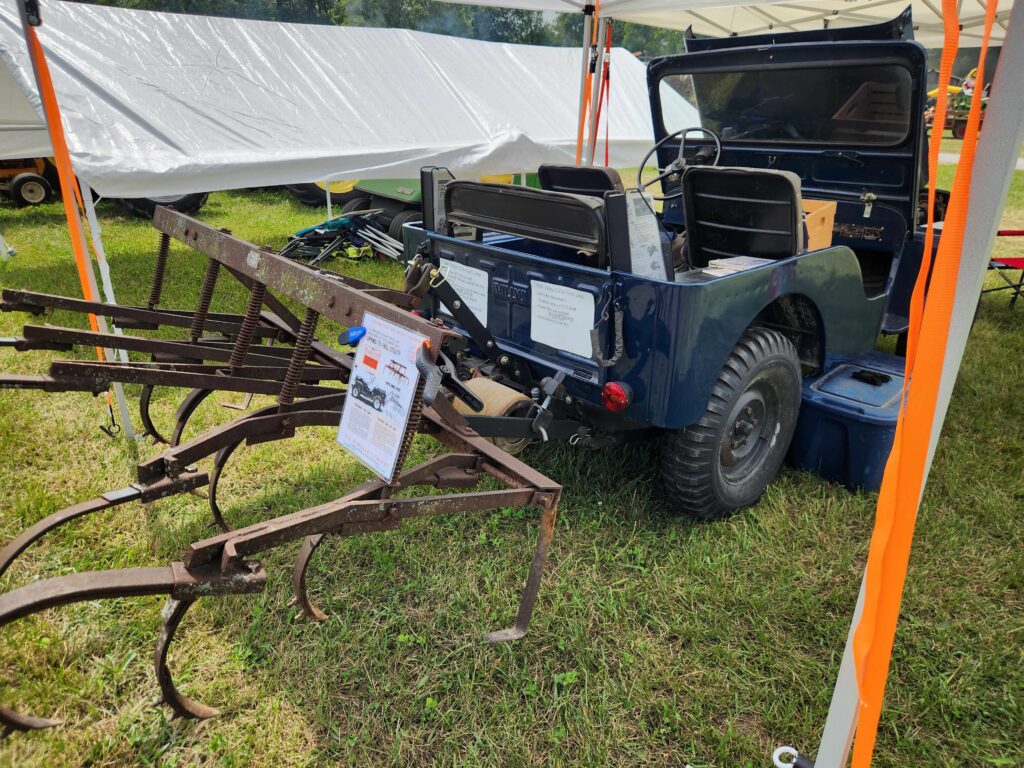
We are at the 2024 Pioneer Engineer’s show and will provide updates each day. We have changed up our display and already discovered an old WWII substitute tractor.
In our last blog post, we said we would give an update on fixing the hydraulic pump leak. We are pleased to report that we were able to replace the pump shaft seal and that fixed the leak. We will be updating the pump information with the new seal information.
It is hard to believe that it is already the 4th of July. We hope everyone is having a safe and sane holiday – and maybe a Jeep ride for extra fun.
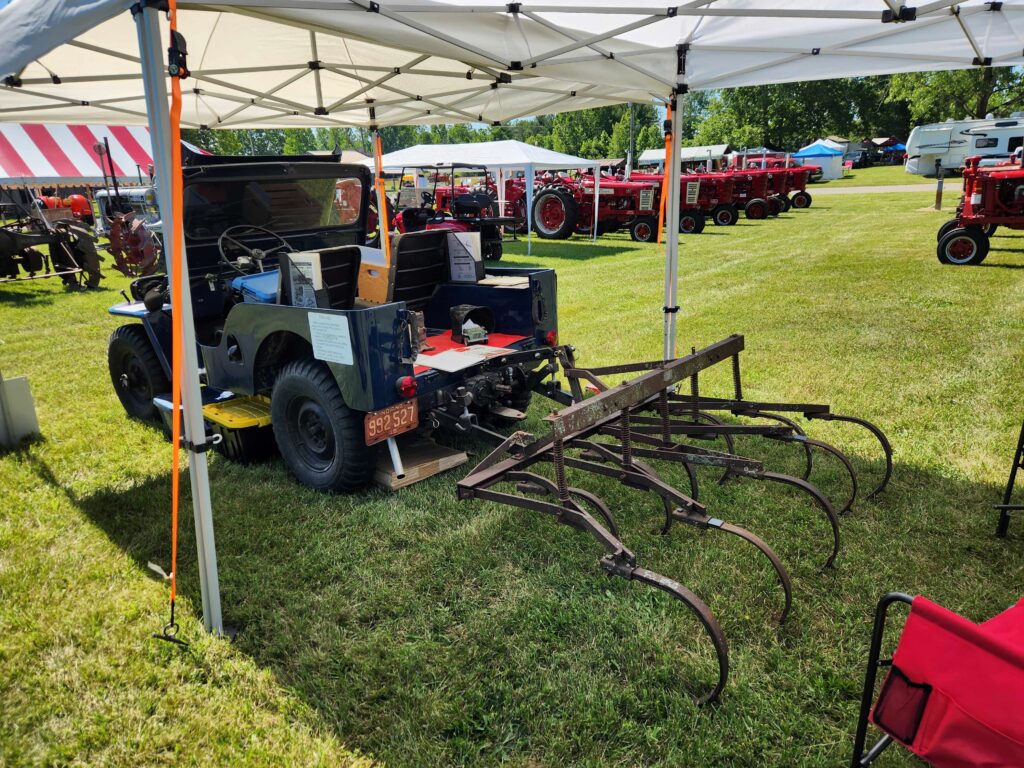
A common question we are asked is “Do you have any other Newgren implements?” We have displayed three different Newgren plows at shows, including a very rare Bantam tagged version. But perhaps it was time for something different.
We have had the Newgren 6 ft Spring Tooth Field Cultivator for a few years now. It is missing a couple of “teeth” and two “backer springs” but otherwise it is just rusty. It wasn’t going to take much effort to make it show worthy.
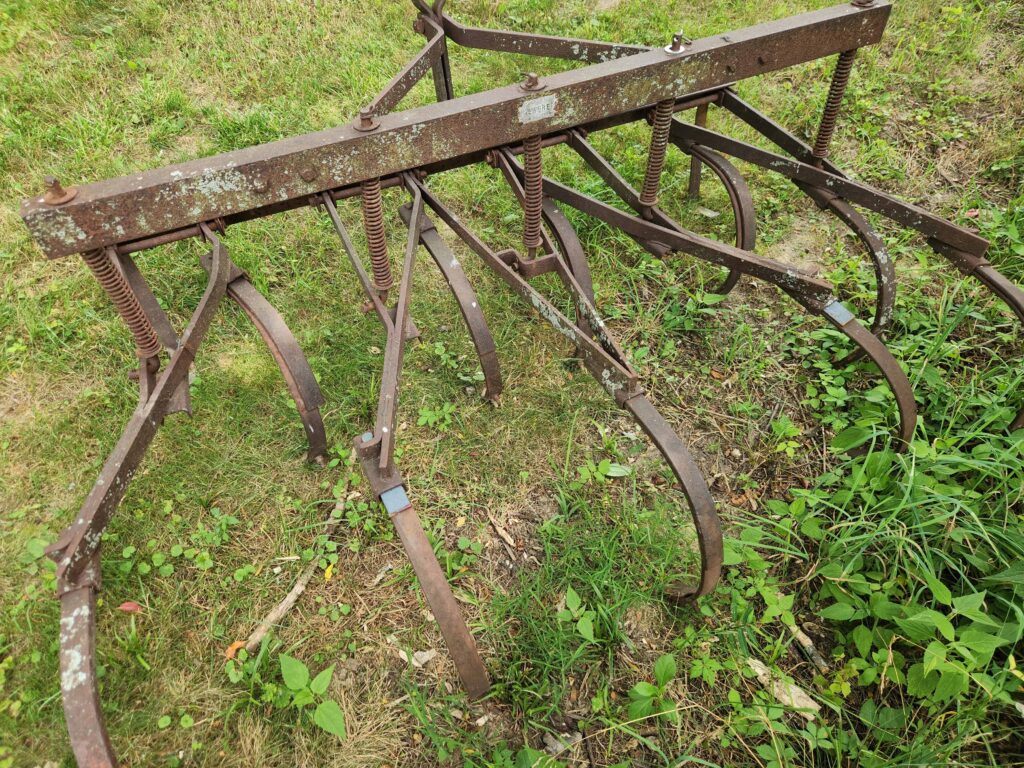
We are searching for the three missing “teeth” and two “backer” springs. In the meantime, we stiffened the mounting with two small pieces of flat bar steel. These are visible in the picture – the none rusty parts.
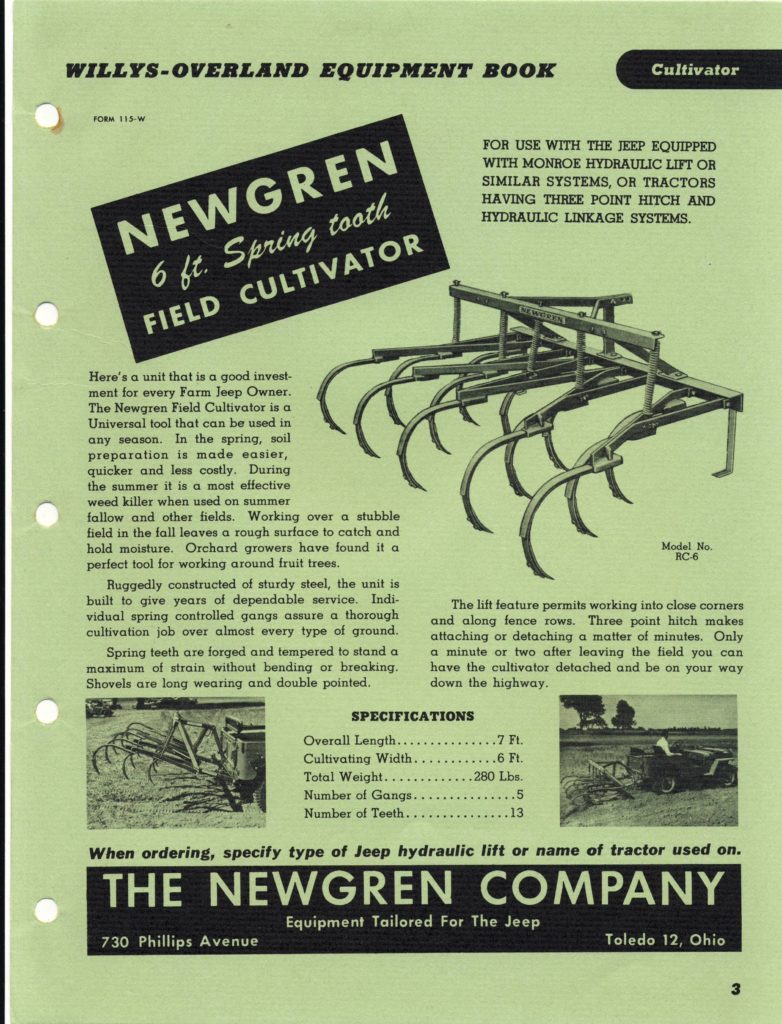
We hadn’t spent much time examining the cultivator. When we starting looking at the Equipment Book entry, we noted that you needed to specify the type of 3-point hitch you were using. As with the plows, the cultivator would ship with a different top-link configuration for the Newgren and Monroe lifts. Our cultivator is a Monroe version but appears to work well with the Newgren lift. The cultivator pictured in the Equipment Book is the earlier Newgren version.
The cultivator is hard to miss hanging off the back of the Jeep. So far, there has been little reaction at shows to the change from the plows. But it is a nice change for us. Something different to discuss.
The cultivator is about half of the weight of a double bottom plow, so we weren’t concerned about the hydraulic system. However, when Barry went to load the Jeep on the trailer at the end of the last show, he saw fluid on the deck. The leak was at the front of the engine. We have fought leaks from both the hydraulic pump and the engine crankshaft seals.
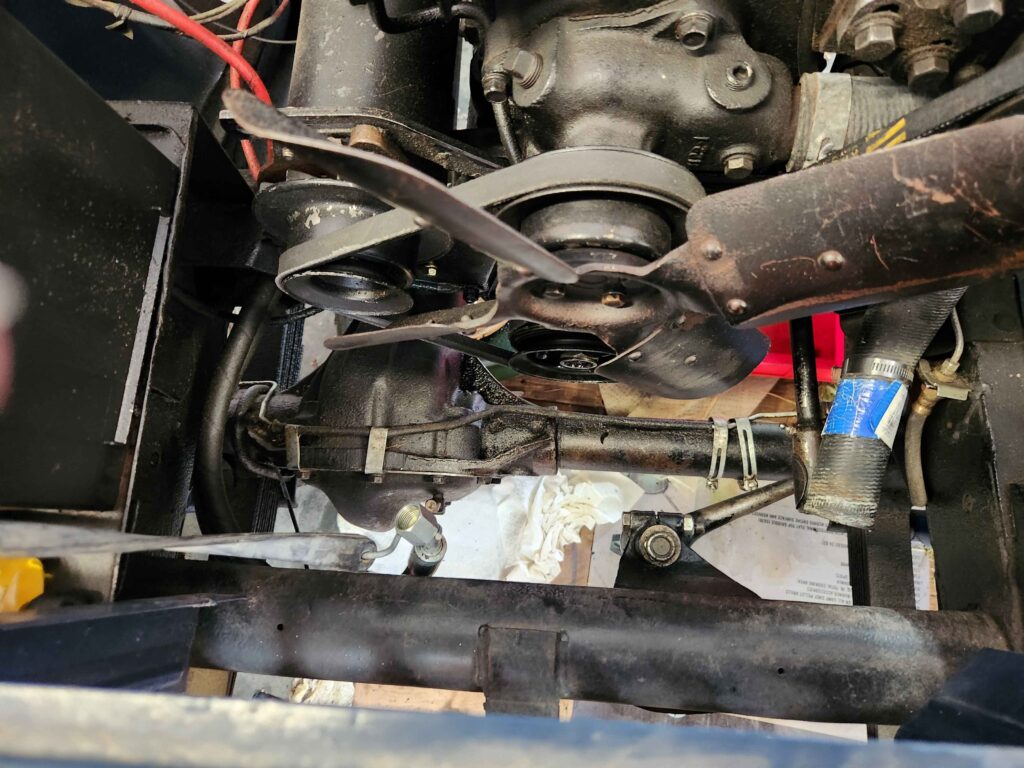
The fight isn’t over. Barry disconnect the pump from the crankshaft pulley and determined it was the hydraulic pump that is leaking. That was good news from the perspective of easier to fix,. But it was bad news in that the chronic blowing of pump seals seems to still be with us. We had thought that changing the pump mounting bracket from the early strap style to the later Monroe forged style had solved the problem. This was after installing a pressure relief valve.
We have removed the radiator to make the job easier and acquired a pump seal. We had hoped to have the pump reinstalled and tested before this update. It didn’t happen. So stay tuned as the saga continues.
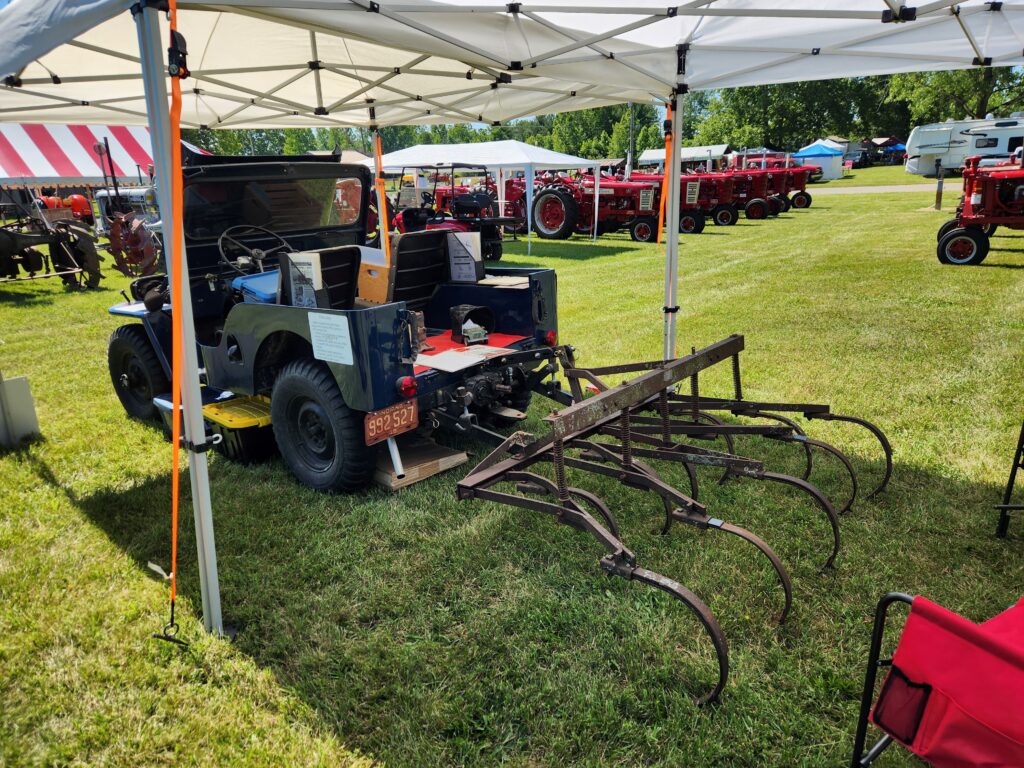
It is the middle of June and antique machinery shows are in full swing. It is a great time to checkout shows near you. If you haven’t been to a show, you can expect to see a variety of tractors, farm equipment, working displays, and fair-style food. The shows are fun for the whole family.
While you are there, we would appreciate it if you would keep an eye out for any Farm Jeeps. The are easy to spot among the rows of red, green, and orange tractors. Check out our spotter’s guide if you want to learn how to recognize the different types of lifts.
We would also like for you to snap a photo or two to add to our collection of Farm Jeep’s in the wild that we have just started. Just send them to barry @ farmjeep.com (remove the spaces) along with location information. Other information appreciated, but not necessary
Not sure how to find shows near you? Just search for antique farm tractor shows. Hopefully, we will get to see you at one of the shows we attend.
We try to do a monthly update, just to let you know what is going on at Farm Jeep. This past month, the answer to what is going on has been too much! We have attended two Jeeps shows and photos (unedited and not captioned) are list below. We have some interesting things in the pipeline, but they aren’t quite ready. Hopefully, they will be worth the wait.
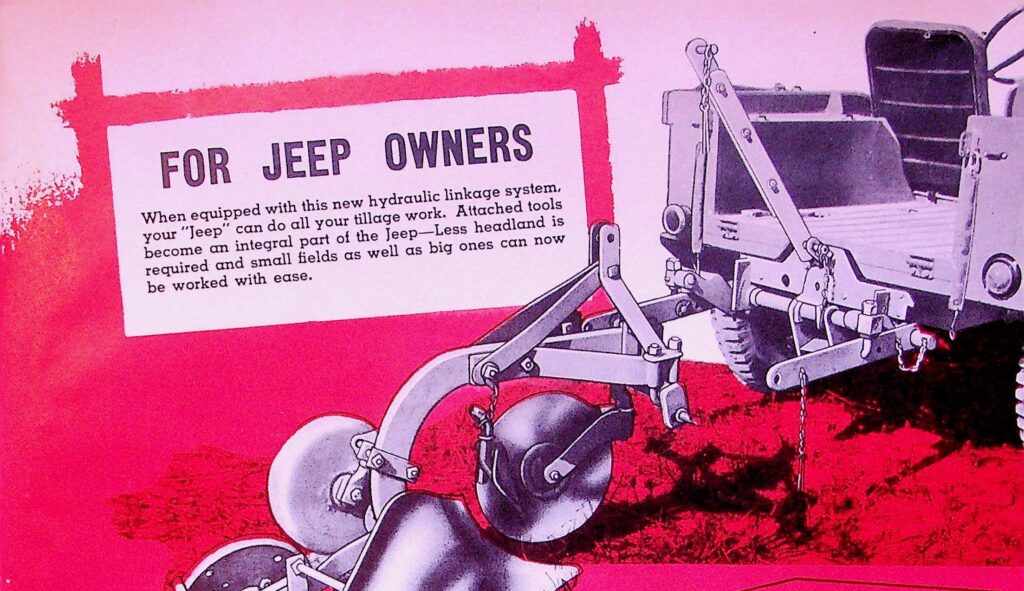
With the summer show season underway, we are asking for your help in collecting pictures of Farm Jeeps in the wild (or at least not on the internet). You can check out the complete Farm Jeep Spotter’s Guide, but the process is quite simple.
When you are at a Jeep show or an antique tractor show, just look for any model Jeep in the years 1945 to 1970. The model doesn’t matter. It can be a CJ2a, CJ3a, CJ3b, or CJ5. Look at the rear. If there is equipment back there under or in the bed, it is probably a Farm Jeep. Snap a picture or two with your phone and send them, along with your location, to barry@farmjeep.com or evan@farmjeep.com. It is that simple.
We will be building a gallery of pictures from around the country with your help. We won’t share your personal information Happy hunting!
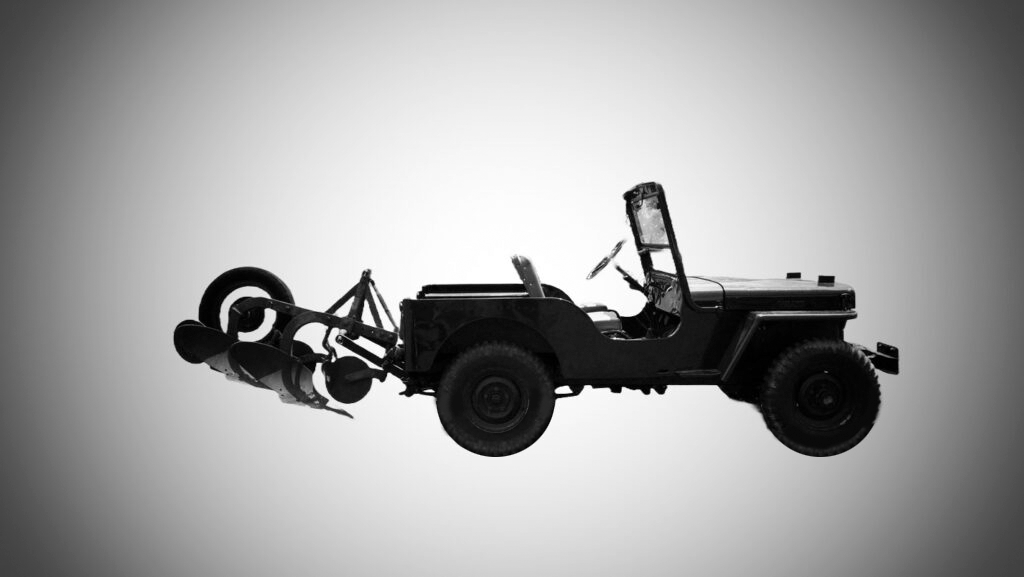
Last January, we announced that we were going to create a hydraulic lift registry database. Then, things went dormant. But spring and Jeep and antique tractor shows are about to burst forth. So in the next few days and weeks, we plan to restart the project with a little twist.
While we hope to collect enough data to provide insight into how many Farm Jeeps are still out there, we may need to settle for simple sightings. People who might not want to provide details (like a serial number) might be willing to share a photo and location.
We plan to send notices to Facebook, Jeep and antique tractor forums and to anyone who might listen. We will shoot (no pun intended) for details, but settle for pictures or even references to videos.
Stay tuned.
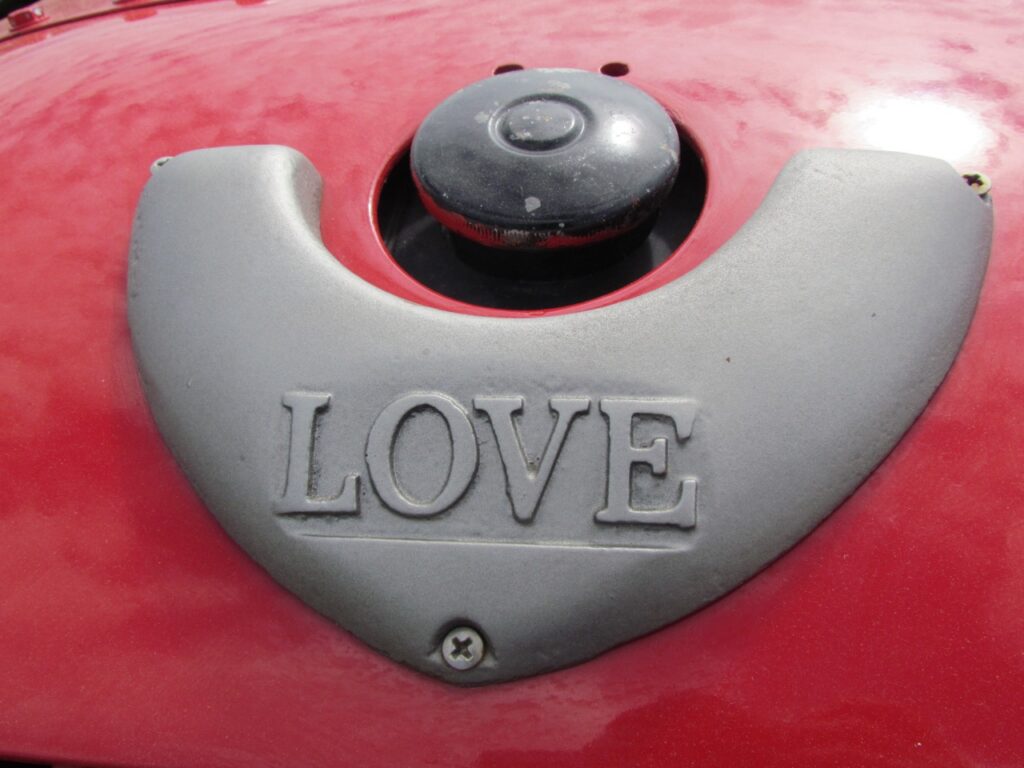
We have spent the last month working on our Love story. While we continue to find new information, you can see the results of our research of Jabez Love.
Daryl Dempsey sent us the photo above along with many others Daryl has been helping us with our Jabez Love and David Friday research. It turns out that Daryl also has a Jeep story!